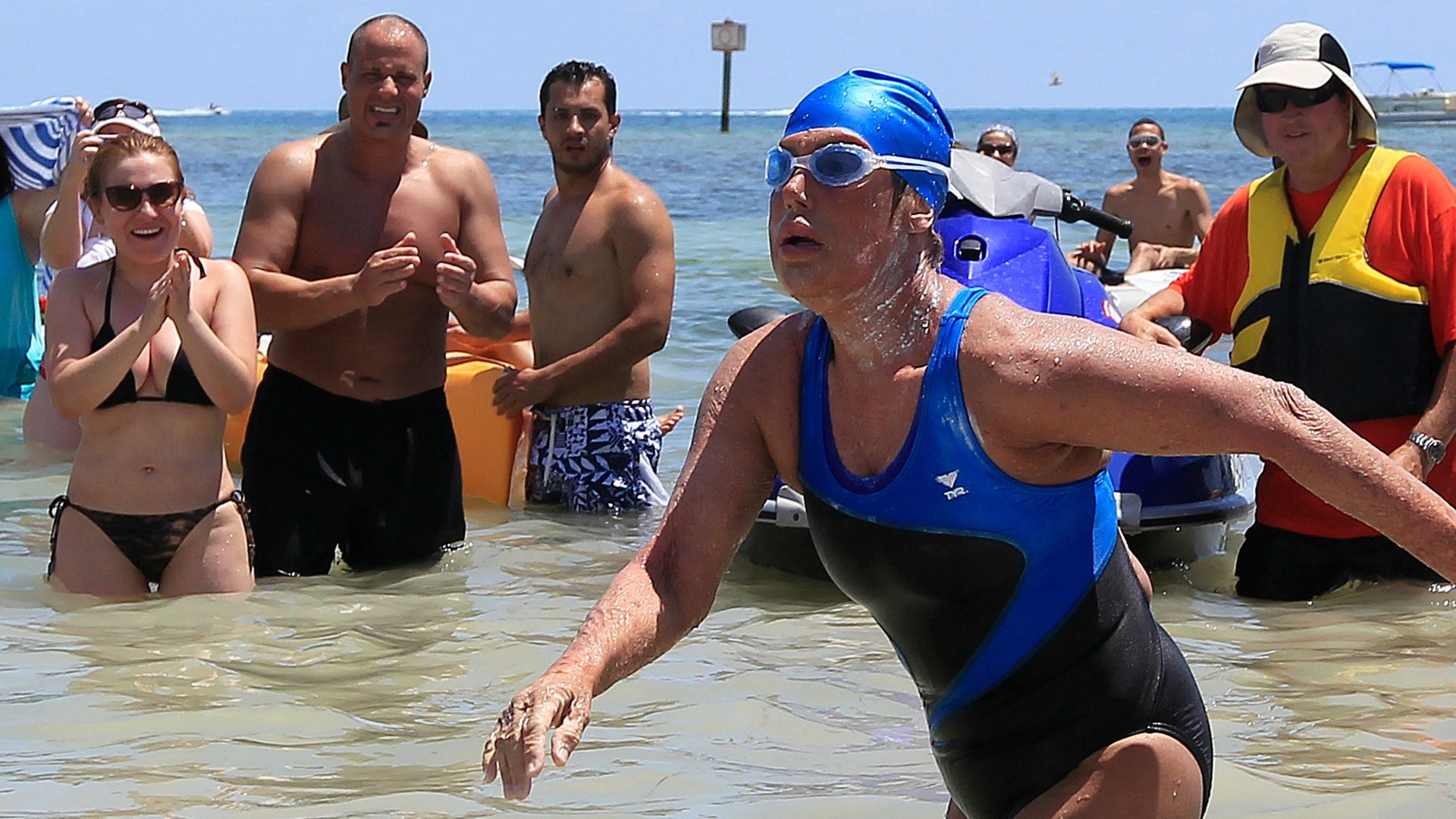Diana Nyad shows that the US has miles to go in its portrayal of older women
When Paul McCartney crooned wistfully in the 1967 Beatles classic ”When I’m 64,” it was a young man’s tenuous projection about grandchildren at his knee and a wife who fed and needed him. It is doubtful he had 64-year-old Diana Nyad in mind.


When Paul McCartney crooned wistfully in the 1967 Beatles classic ”When I’m 64,” it was a young man’s tenuous projection about grandchildren at his knee and a wife who fed and needed him. It is doubtful he had 64-year-old Diana Nyad in mind.
Emerging victorious from her 53-hour, cageless, solo swim from Cuba to Florida, Nyad blasted a hole in the gender-polarized image of aging in America with her declaration, “You’re never too old to chase your dreams.” And only briefly back on dry land, Nyad announced she’s jumping back in to swim for two days straight near New York City in October.
Athletic, resilient and strong, she is not the prominent image of your run of the mill old lady. Thankfully, the deep media coverage of her feat helps reshape the norm of senescent females.
That is because the geriatrification of Americans has traditionally read as a tale of two sexes. The narrative proceeds with men only becoming more distinguished and powerful as they age (think Michael Douglas or Robert Redford) while women are urged to apologetically defy their age with make-up, procedures, products and perhaps little white lies about their birthdates (think Jane Fonda or Arianna Huffington).
Whenever someone like Nyad breaks the mirrored ceiling, reflecting a useless or Barbied-up crone, it causes us to rethink the definitions of old—and aging. Is 70 the new 30? For men, it appears never to have been a question as there is no apology associated with aging, just acceptance. For women, it seems, 70 can only be the new 30 with surgical or cosmetic alteration.
As I flip through the ink on paper version of my local newspaper, ads for hearing aids and knee replacement surgery are gender-neutral. That’s because, like cars, every body gets some wear and tear and occasionally needs some replacement parts.
But the messages for females in print and digital media persist that we need to refurbish, fix up and hide any signs of physical maturation. On women’s magazine More.com, in a feature called, “This is What 30, 40, 50, 60 Looks Like,” the teaser reads: “Here, we spill their look-better-with-age secrets (and 36 must-have products!) to glowing skin, enviable hair, a great sense of style and strong, healthy bodies.” Emphasis on the three dozen products.
Revlon’s age-defying products make up some of the projected $114 billion to be spent annually on anti-aging by 2015. Anti-aging doctors and clinics touting anti-aging therapies abound in this country—their messaging predominantly targets women. The subtext is that it is not OK for women to grow old unless they invest in age defiance.
“Because old women are seen as old bodies, physical appearances encompass their whole being, “ writes Margaret Cruikshank, faculty associate at the Center on Aging at the University of Maine. In her 2013 book, Learning to Be Old: Gender, Culture & Aging, Cruikshank compares older women with a colonized people: they are thought to be less intelligent, “are figures of fun,” and are scapegoated.
We’d better recalibrate this gender duality of age acceptance quickly because Americans are graying. The number of Americans 65 and older will double between 2012 and 2060, from 43.1 million to 92 million, according to the US Census Bureau. And most of the older Americans are women; in 2012, the ratio of those 65 and older was 77.3 males for every 100 females.
For every Helen Mirren who is vibrant, voluptuous, and touted as exceptional at 68, there are many more Betty White-types. This is a woman who looks her 91 years and induces hysteria when she drops sexual innuendos because being sexual at her age would be preposterous.
Yet, at 87, Hugh Hefner wants everyone to believe it is not implausible he is still a potent sex god. Sean Connery maintains leading man status at 83. And actor Tommy Lee Jones looks every minute of 66 (and then some) as he proudly proclaims he has all the answers—unretouched and unapologetic—in Ameriprise Financial commercials about the la-di-da days of retirement.
It’s not that we don’t respect or tolerate our elders as a whole. According to a Pew Research study last month from the Religion and Public Life Project, 41% of those surveyed said having a society with more older people is a good thing, 47% said it made no difference. Only 2% said it is a bad thing to have more older people around. Most Americans, or 69% of those surveyed by Pew, said they would like to live to be 79 to 100 years old.
Most will get their wish. By 2050, according to the Census, 20% of Americans will be 65 or older. More than 400,000 will live to be more than 100 years old.
Yes, there will be more older women in the world; 20% of the world’s population will be women over the age of 50 by the year 2050. We need an equitable tolerance for women to look and act their age, which includes Diana Nyad looking more fit than most 30-year-old men or women I know.
My bathing cap is off to her for showing American women we can move from age defying to age redefining and ultimately to what older men already seem to know—the bliss of age embrace.